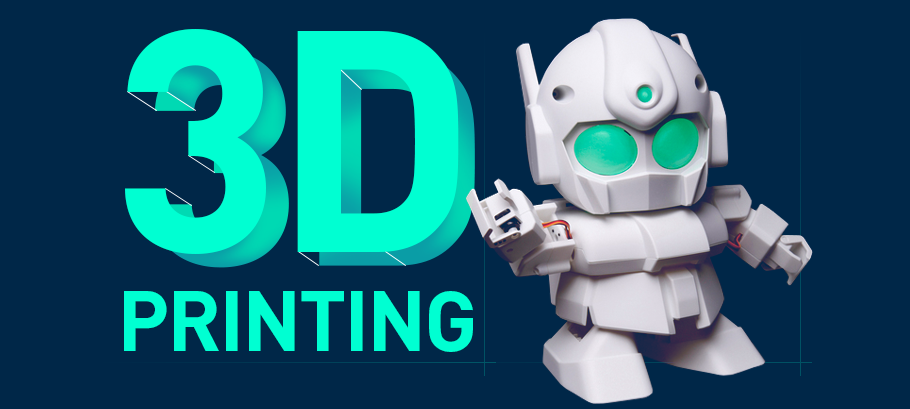3D printing is a novel example of printing technology that has made waves in recent years because of its usefulness in many applications. The technique is largely based on the additive manufacturing method, which involves the layer-by-layer deposition of the primary constituent material that will form the final product.
3D-printed products today are typically made of plastic material (like nylon, ABS, and resin), but there are also variants that are produced using metals (like stainless steel, titanium, gold, and silver). Other building materials used in 3D printing include ceramic, concrete, and various forms of minerals. The printed products are produced by the printing equipment, which uses computer-aided graphics and relies on precision motion components like highly accurate linear XY tables.
Because of the versatility of the 3D printing method, is it being hailed by experts as the next big thing in manufacturing. Whereas the rise of the mass production process meant the emergence of a global economy based on the widescale production of standardized products through assembly line technologies, 3D printing presents an alternative paradigm that may be more sustainable in the long run. Instead of relying on standardization to achieve economies of scale, 3D printing promises to enable rapid prototyping and mass customization while still maintaining low production costs—a characteristic that has become a hallmark quality of mass production.
There are many disciplines that can really benefit from this promise of personalization and mass customization.
Here are some of them:
Medicine
3D printing is now being used to manufacture highly efficient medical devices such as prosthetics, orthosis, and implants, which can be ergonomically designed or tailored to the specific needs of patients. However, an even more promising application of 3D printing in the medical industry is the printing of human tissue and even whole organs using living cells. When this technology is finally perfected, it will practically eliminate the widespread problem of patients being put on a waiting lists and needing to await the availability of organs from donors.
Construction
3D printing has long been used in the production of durable and beautiful scale models that are created for the purpose of demonstrating the feasibility of building inspiring works of engineering and architecture. On top of this, the technique has also been used in the fabrication of building or construction components for many years. Today, even entire houses and other structures are being constructed using scaled up versions of additive manufacturing.
Automotive, Aeronautics, and Aerospace
Without doubt, 3D printing is also certain to change the way people move and travel. Already the method is being used in the automotive industry not just for prototyping important vehicle components, but also for producing actual parts that are used in finished products. These include everything from seat back panels and shift knobs to exhaust components and entire turbocharger assemblies.
Likewise, in the fields of aeronautics and aerospace engineering, 3D printing has become very useful not only for the fabrication of plastic and metallic components of vessels like airplanes and spacecrafts, but also for other applications as well. For instance, astronauts now carry 3D printers to space for the purpose of being able to manufacture tools and other equipment that they might need unexpectedly.
Environmental Conservation
One of the most familiar uses of 3D printing in environmental conservation is its use in the production of animal prosthetics. This process is helpful in improving the beneficiary’s quality of life and its chances for survival.
Increasingly, however, 3D printing is also being explored for its possible applications in other conservation efforts. For instance, an innovative startup wants to flood the black market with 3D printed rhino horns. They will be made of keratin, the same material that constitutes actual rhino horns. In doing so, it is hoped that the current prices of horns—along with incidents of poaching—will go down significantly.
Meanwhile in Bahrain, 3D-printed coral beds made of dolomite sand is also presently being hailed as a likely solution to destructive coral bleaching events. Because the fake coral reefs are more resistant to shifting ocean chemistry, they can help house and nurture baby coral polyps, which can later grow to healthy, thriving adults.
3D printing presents so many advantages that could change the way we live and the way we interact with the world. With this technology, we can certainly solve many of today’s existing challenges.






More Stories
How to Effectively Remove ChocoEukor from Your Android Device
From Pixels to Perfection: Mastering the Art of Web Design
How to Stop TinyTask: 10 Effective Techniques for Gamers and Tech Enthusiasts